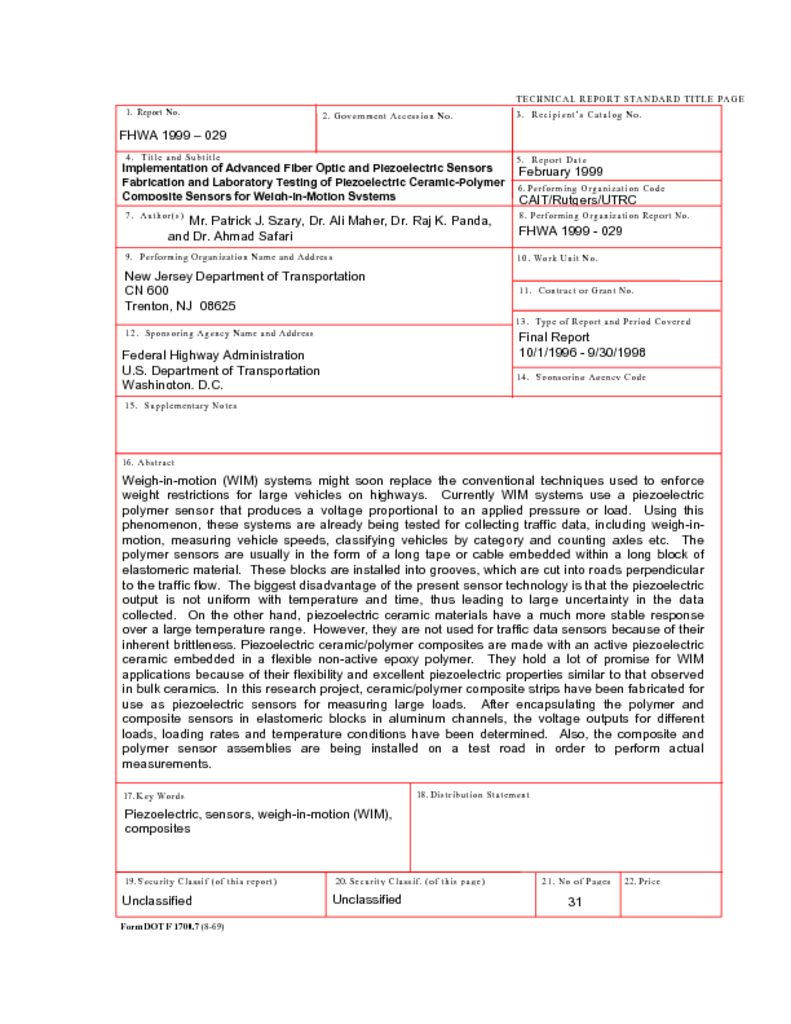Weigh-in-motion (WIM) systems might soon replace the conventional techniques used to enforce
weight restrictions for large vehicles on highways. Currently WIM systems use a piezoelectric
polymer sensor that produces a voltage proportional to an applied pressure or load. Using this
phenomenon, these systems are already being tested for collecting traffic data, including weigh-inmotion,
measuring vehicle speeds, classifying vehicles by category and counting axles etc. The
polymer sensors are usually in the form of a long tape or cable embedded within a long block of
elastomeric material. These blocks are installed into grooves, which are cut into roads perpendicular
to the traffic flow. The biggest disadvantage of the present sensor technology is that the piezoelectric
output is not uniform with temperature and time, thus leading to large uncertainty in the data
collected. On the other hand, piezoelectric ceramic materials have a much more stable response
over a large temperature range. However, they are not used for traffic data sensors because of their
inherent brittleness. Piezoelectric ceramic/polymer composites are made with an active piezoelectric
ceramic embedded in a flexible non-active epoxy polymer.
Publication Category


